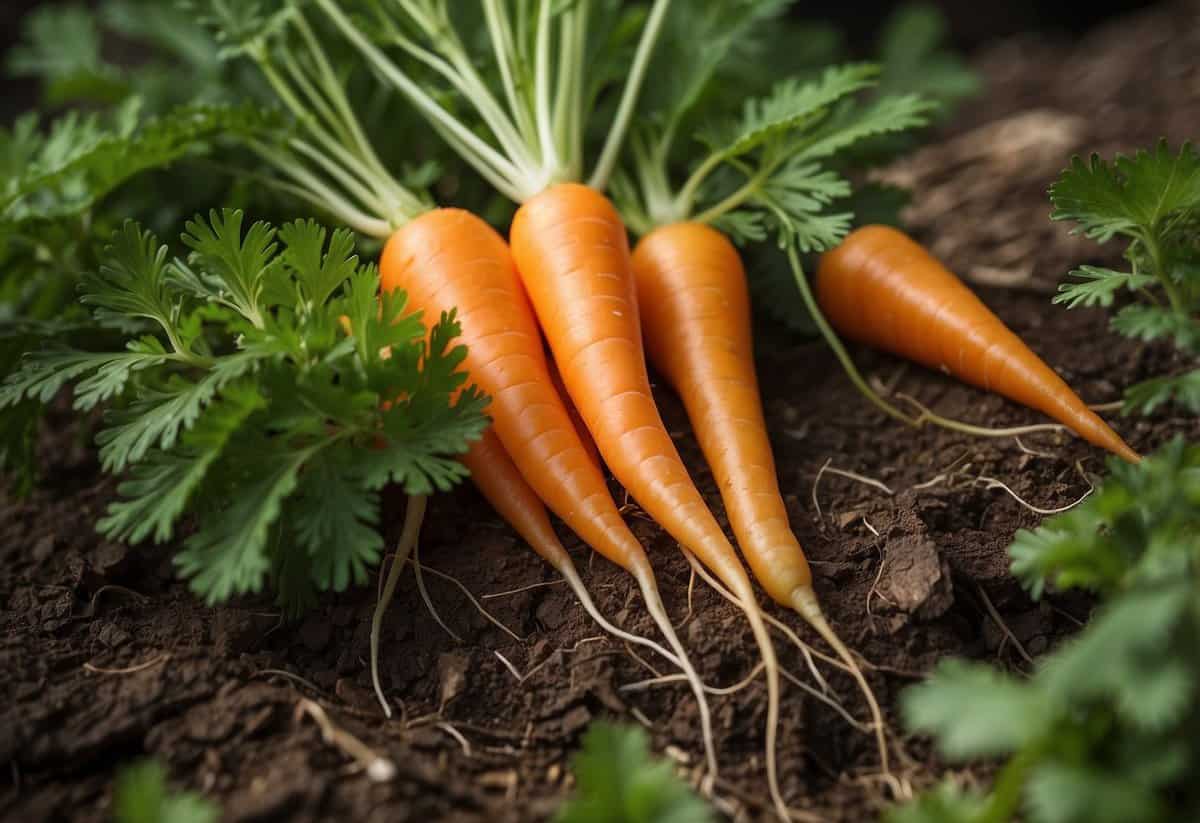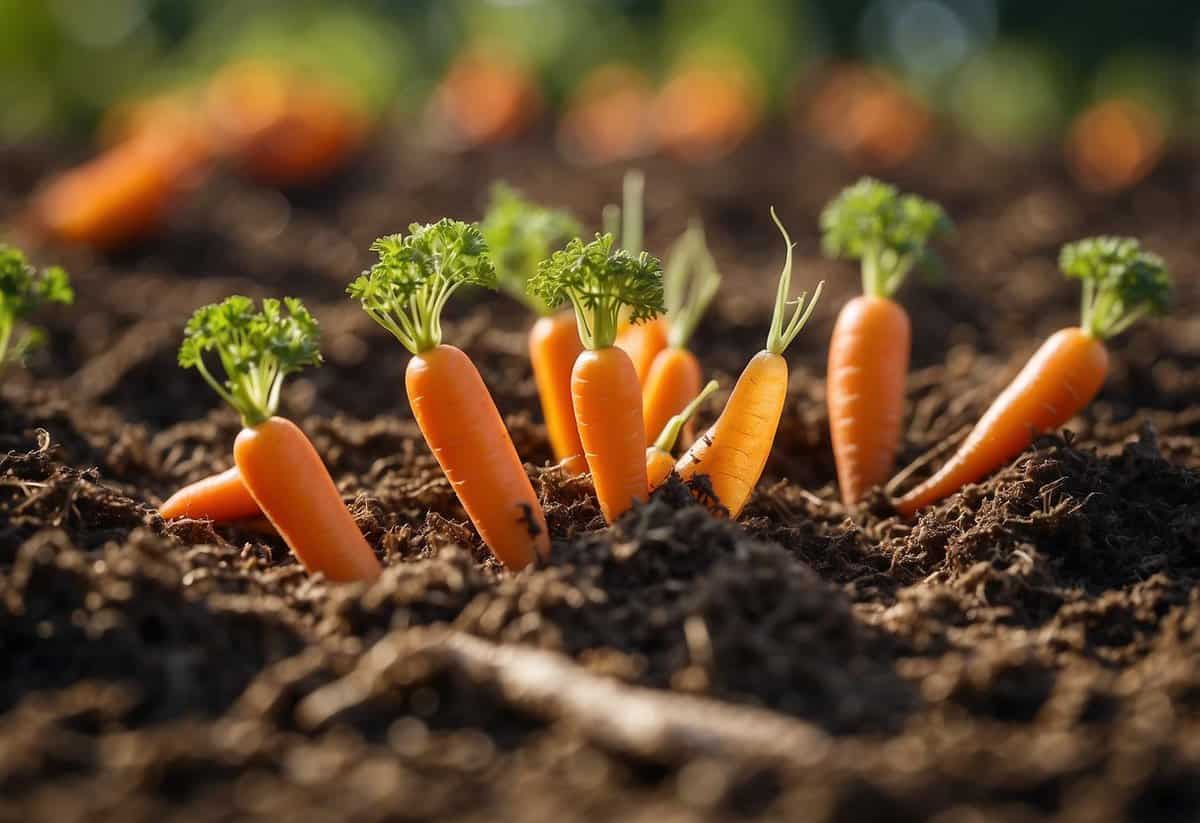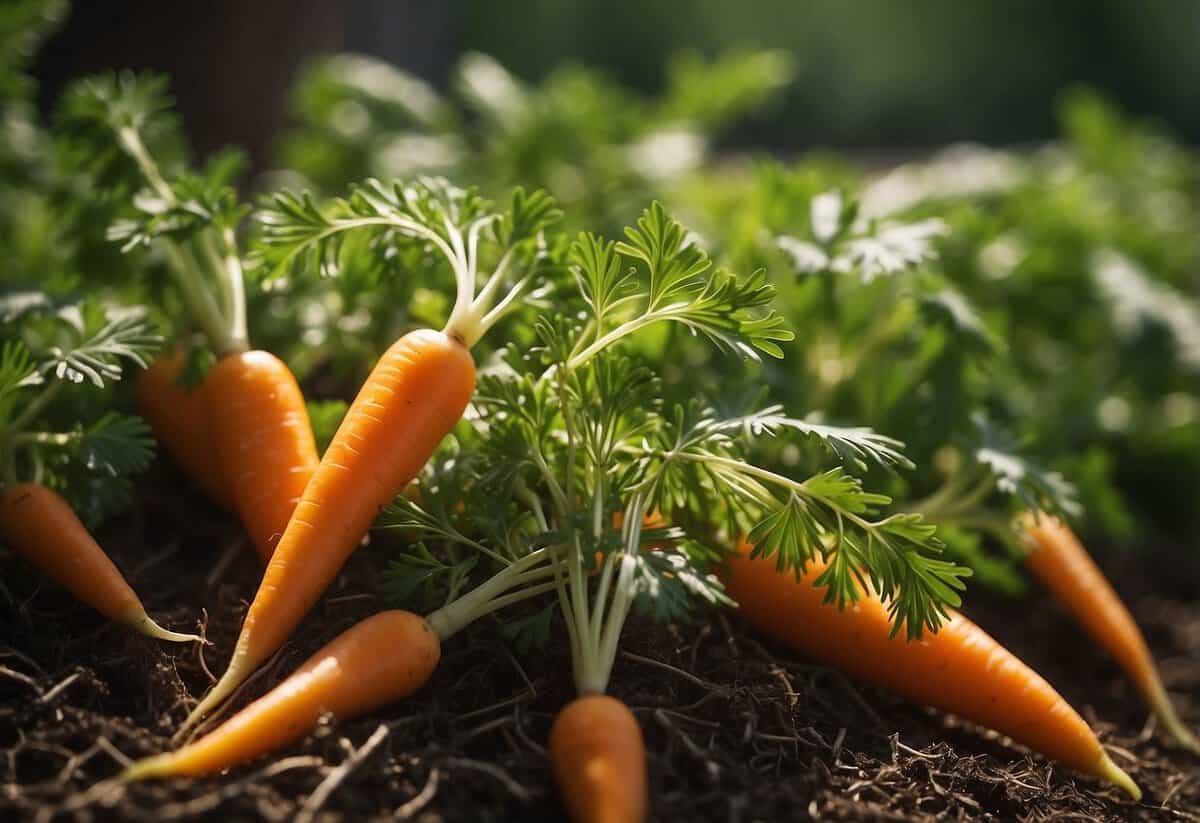Are Carrot Peels Good for Plants? Discover Their Benefits!
If you’ve been tossing carrot peels in the trash, you might want to think twice. These simple kitchen scraps can be quite beneficial for your garden. Carrot peels are not only good for plants, but they can also improve soil nutrition and promote healthy plant growth.

Carrot peels contain valuable nutrients such as potassium, calcium, and phosphorus. When you add them to your garden, they break down and release these nutrients into the soil. This process boosts the organic matter in your soil, enhancing its ability to retain moisture and support plant roots.
Incorporating carrot peels into your gardening routine is easy and environmentally friendly. By reusing these organic scraps, you help reduce waste and nourish your plants simultaneously. Ready to learn how to use carrot peels effectively?
Benefits of Carrot Peels for Plant Health

Carrot peels bring a variety of benefits to your garden. They enrich the soil with essential nutrients while helping to keep pests like ants, slugs, and aphids at bay.
Nutrient Content in Carrot Peels
Carrot peels are packed with nutrients that are beneficial for plants. They contain potassium, which helps plants grow stronger and resist diseases. Nitrogen in the peels promotes healthy leaf growth. Plus, phosphorus supports flower and root development.
Sprinkling chopped carrot peels into the soil releases these nutrients as the peels decompose. This is a natural way to fertilize your garden without synthetic products. The calcium in carrot peels can also help prevent issues like blossom end rot in tomatoes.
Impact on Soil Quality
Adding carrot peels to your garden can improve the quality of the soil. They help in maintaining good moisture levels, which is crucial for plant health. When you chop and mix the peels into the soil, they break down and improve soil structure.
This organic matter encourages beneficial microorganisms to thrive. These microorganisms help break down other organic materials, making nutrients more available to plants. Carrot peels can also help in preventing erosion by enhancing soil stability.
Natural Pest Control Properties
Carrot peels can help you control pests naturally. When placed in the soil, they can discourage pests like ants, slugs, and snails from targeting your plants. The odorous compounds in carrot peels are unattractive to many pests, which helps protect your garden.
Using carrot peel water can also deter pests. Soaking carrot peels in water creates a liquid you can spray on plants. This spray is particularly good against soft-bodied pests like aphids and beetles.
Making use of carrot peels is a simple and effective method to keep your plants healthy, improve soil quality, and manage garden pests naturally.
Using Carrot Peels in Composting

Carrot peels are a valuable addition to your compost pile. They decompose quickly, provide essential nutrients, and help balance the pile. Below, you’ll learn how to create a balanced compost pile and speed up the decomposition process.
Creating a Balanced Compost Pile
A balanced compost pile needs a mix of green and brown materials. Green materials, like carrot peels, kitchen waste, and coffee grounds, provide nitrogen. Brown materials, such as dry leaves and cardboard, supply carbon.
You should layer these materials in your compost bin. Start with a layer of brown material, then add a layer of green material, including chopped carrot peels. Adding other vegetable peels, banana peels, and eggshells will improve the compost quality.
Water the pile to keep it moist but not soggy. This moisture level helps microorganisms, which are crucial for decomposition, thrive. Turn the compost regularly to aerate it and speed up the breakdown of organic matter.
Speeding Up the Decomposition Process
Chopping carrot peels into smaller pieces will accelerate their decomposition. Smaller pieces break down more quickly, making nutrients available to your plants sooner. You can use a food processor or blender to achieve finer textures for faster results.
To further speed up the process, mix carrot peels with nitrogen-rich materials such as fruit peels and coffee grounds. Adding a layer of soil over your compost pile introduces beneficial microorganisms that enhance decomposition.
Keep the compost moist and turn it frequently to maintain good airflow. The more you aerate the pile, the faster the organic matter turns into rich, dark compost. This method ensures a healthy environment for the microorganisms and speeds up the composting process.
How to Prepare Carrot Peels for Garden Use

You can use carrot peels as a natural fertilizer for your garden by preparing them in a few simple ways. First, you can chop or blend the peels. Alternatively, you can create a nourishing infusion with them.
Simple Preparation Methods
Start by collecting your carrot peels and any other carrot scraps from your kitchen. Make sure they are free from pesticides or any harmful substances.
1. Chopping or Blending:
Chop the carrot peels into tiny bits. This helps them decompose faster in the soil. You can use a sharp knife or a food processor for this task. Blending the peels into a smooth mash makes it easier for plants to absorb vital nutrients like potassium and nitrogen.
2. Drying:
Spread the carrot peels on a baking sheet and let them dry in the sun for a few days. You can also use an oven set to a low temperature. Dried peels can be stored in a jar and crumbled into powder when needed. The powder is ideal for sprinkling around plant bases.
Creating Carrot Peel Infusions
One effective method to prepare carrot peels is by making an infusion. This works as an excellent liquid fertilizer that can be easily absorbed by plants.
1. Boiling:
Boil a medium-sized carrot, along with the peels, in a liter of water. Simmer for about 30 minutes. This process extracts essential nutrients. Once cooled, strain the liquid into a container.
2. Using the Infusion:
Pour the strained liquid directly onto the soil around your plants. This gives them a quick boost of nutrients. You can use the leftover boiled peels as compost material or directly mix them into the soil around your plants.
By following these methods, you will ensure your plants get the best out of carrot peels. Save your kitchen scraps and help your garden thrive!
Incorporating Carrot Peels into Potting Mixes

Carrot peels can be a great addition to potting mixes, enhancing soil nutrients. They are especially beneficial for potted plants and houseplants, providing a slow release of nutrients.
Enhancing Potted Plant Growth
Carrot peels are rich in potassium, which is crucial for plant health. Potassium helps with strong root growth and can increase the resistance of plants to diseases. You can chop the peels into tiny bits to mix them into the soil. This also helps with the decomposition process, ensuring that nutrients are released slowly over time.
For potted plants and houseplants, mixing carrot peels into the potting mix can improve soil quality. The peels break down and add organic matter, enhancing the soil’s structure. Better soil structure improves drainage and aeration, both vital for root health.
Using carrot peels in your potting mix is a simple and eco-friendly way to nourish your plants without resorting to chemical fertilizers. Make sure to chop them finely for quicker decomposition and nutrient release. This practice not only helps your plants but also reduces kitchen waste, promoting a more sustainable gardening approach.
Environmental and Economic Advantages

Using carrot peels as a fertilizer for your garden offers both environmental and economic benefits. This practice reduces kitchen waste and provides a cost-effective method for enriching your soil.
Reducing Kitchen Waste
By reusing carrot peels, you help minimize food waste. Instead of throwing these scraps away, you can turn them into a valuable resource for your garden. This is an eco-friendly method that helps keep biodegradable material out of landfills.
Carrot peels are rich in nutrients like potassium, which plants need to grow. By composting or processing them for fertilizer, you’re contributing to a more sustainable gardening practice. This approach also supports a broader effort to use kitchen scraps efficiently and responsibly.
Cost-Effective Gardening
Traditional fertilizers can be expensive, but using carrot peels is a budget-friendly alternative. You already have these peels at home, so there’s no extra cost involved. This makes gardening more affordable while still providing your plants with the nutrients they need.
You can create a liquid fertilizer by blending carrot peels with water. This DIY method is simple and economical. Plus, it’s a great way to utilize organic materials that would otherwise go to waste. This not only saves you money but also ensures that your garden benefits from natural, nutrient-rich fertilizer.







